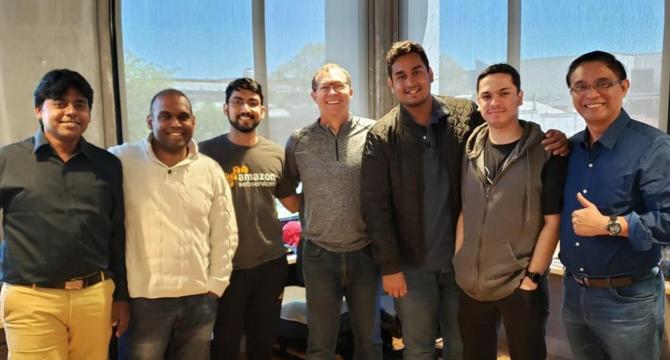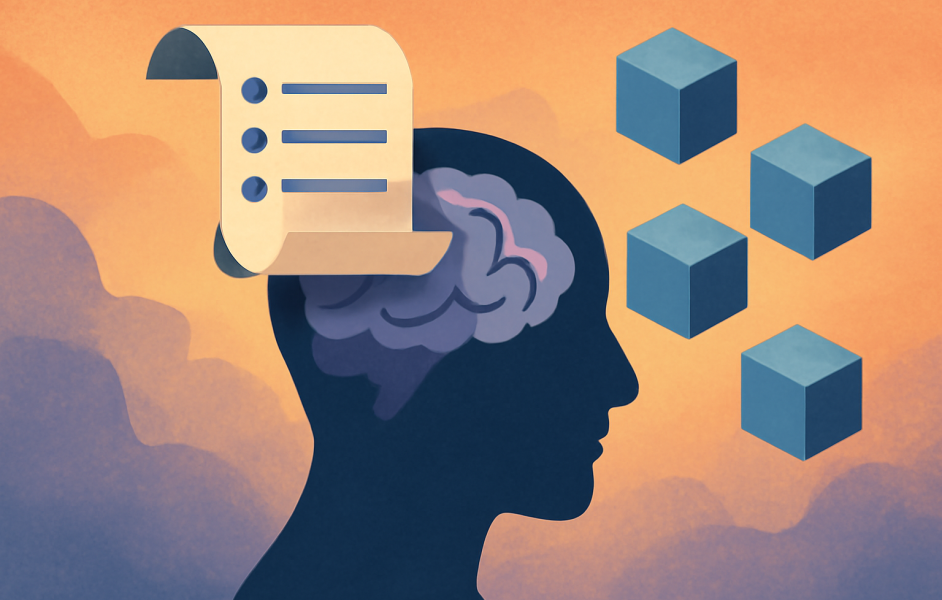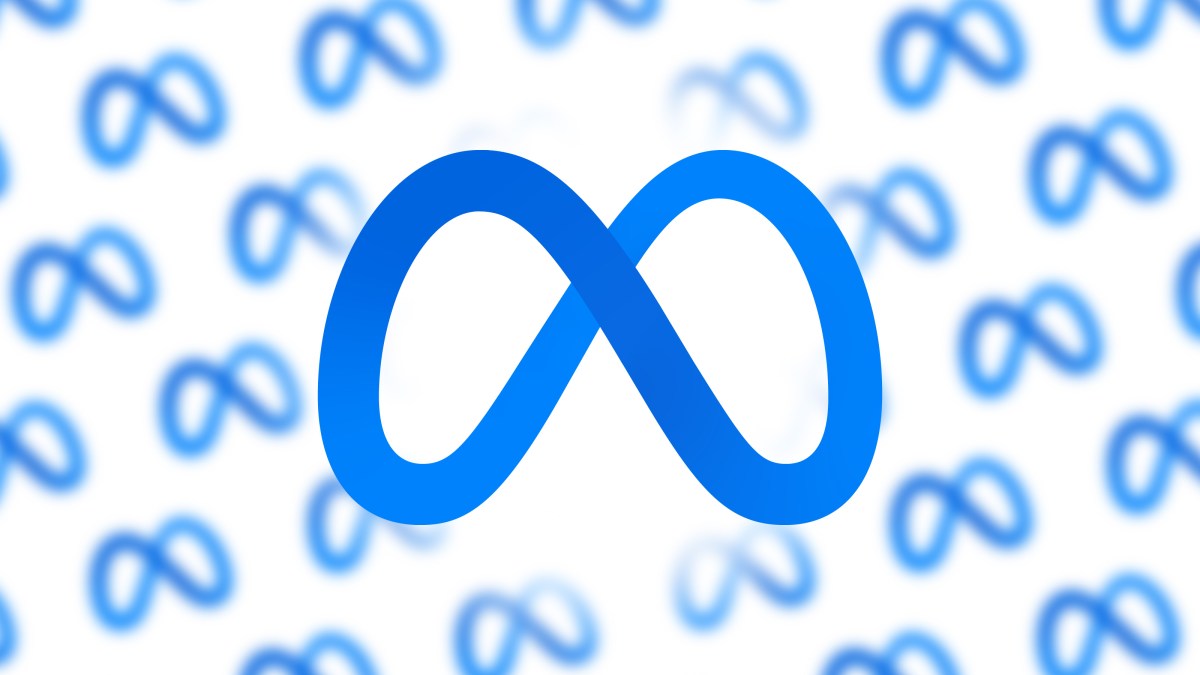Robotics News
Unite
4w
277

Image Credit: Unite
Iterate.ai Secures $6.4M to Bring Secure, Scalable AI to the Edge of the Enterprise
- Iterate.ai secures $6.4 million in funding to advance enterprise-ready AI solutions, emphasizing privacy-first and locally-deployable technology.
- The funding round, led by Auxier Asset Management, includes notable investors like Peter Cobb, Mike Edwards, and Dave Zentmyer, former eBags board members.
- The firm's foresight in AI led to the development of Generate Enterprise, a privacy-focused AI assistant, and Interplay, a patent AI development platform.
- Generate enables offline AI deployment on edge devices, ensuring data privacy and enhancing performance for industries like retail and healthcare.
- Interplay complements Generate, offering a visual drag-and-drop environment for building agentic AI workflows, integrating machine learning models and semantic search capabilities.
- Iterate's CTO, Brian Sathianathan, brings hardware-software optimization expertise to Interplay, supporting diverse chipsets for adaptive performance.
- The team's track record and partnerships with tech giants like NVIDIA, Qualcomm, and TD SYNNEX underscore Iterate's enterprise readiness and credibility.
- By prioritizing security and data sovereignty, Iterate's platform empowers enterprises to control data processing, attracting customers from various sectors for secure AI deployments.
- With a focus on localized, secure, and cost-effective AI deployment, Iterate.ai aligns with the industry shift towards edge computing for AI workflows, catering to enterprise requirements.
- Embracing modularity, air-gapped deployments, and open model compatibility, Iterate.ai addresses the evolving landscape of enterprise AI, moving towards distributed and secure infrastructure.
Read Full Article
16 Likes
Unite
4w
366

Image Credit: Unite
Inside Georgian’s AI Applied Report: Vibe Coding Rises as Talent Gaps Stall AI Progress
- Georgian Partners, in collaboration with NewtonX and an 11-partner global consortium, released the AI, Applied Benchmark Report showcasing AI transformations in B2B software and enterprise companies worldwide.
- The report, based on a survey of 612 executives, highlights growing AI adoption, structural barriers, emerging use cases like Vibe Coding, and the maturity curve of AI integration.
- 83% of B2B companies now prioritize AI, with motivations shifting towards competitive advantage over cost savings and revenue growth.
- Vibe Coding, automated code generation using AI, has rapidly gained traction to address the shortage of AI technical talent, aiding faster delivery and cleaner code production.
- AI advancements have led to improved productivity metrics but underscore weaknesses in areas like stability and resilience, which still rely on human intervention.
- Companies are making significant infrastructure upgrades to support AI development, with increased data sourcing and diversification of AI model providers.
- Georgian's AI maturity model shows uneven progress, with most companies in the intermediate stage, struggling to connect AI projects directly to revenue.
- Clear ROI measurement remains a challenge, despite AI's positive impact on customer satisfaction and long-term value.
- Cost management is improving as companies leverage third-party AI solutions and reduce data storage costs, software maintenance, and labor expenses.
- Vibe Coding is highlighted as a strategic investment for modern software development, signifying the shift towards operationalizing and embedding AI for scalable business impact.
Read Full Article
22 Likes
Unite
4w
201

Image Credit: Unite
Why Large Language Models Skip Instructions and How to Address the Issue
- Large Language Models (LLMs) sometimes skip parts of instructions, leading to incomplete outputs and reduced trust in AI systems.
- LLMs skip instructions due to attention limitations, complex inputs, bias towards simple instructions, and token limits.
- Studies like the Sequential Instructions Following (SIFo) Benchmark 2024 show LLMs struggle with long or complex instructions.
- Improving prompt design, using techniques like prompt engineering and fine-tuning, can help LLMs follow instructions better.
- LLMs on tasks requiring multiple steps face challenges in understanding, reasoning, and producing reliable outputs.
- Issues such as limited attention span, output complexity, and prompt sensitivity contribute to the problem of instruction skipping.
- Best practices to address instruction skipping include breaking tasks into smaller parts, using explicit formatting, and avoiding ambiguous instructions.
- Advanced strategies like using clear labels, chain-of-thought prompts, and testing different models can further enhance LLMs' ability to follow instructions.
- Fine-tuning models on datasets with sequential instructions and utilizing external tools like RLHF can also improve instruction adherence.
- Overall, optimizing prompt design, task segmentation, and model selection can help mitigate instruction skipping and improve the reliability of AI-generated responses.
Read Full Article
12 Likes
The Robot Report
4w
49

NEXCOM NexCOBOT unit joins NVIDIA Halos AI Systems Inspection Lab
- NEXCOM's NexCOBOT unit has joined the NVIDIA Halos AI Systems Inspection Lab to advance safe development of humanoid and AI robots, focusing on functional safety.
- NexCOBOT specializes in safe robot controls and offers open-architecture controllers and design verification services for robotics manufacturers.
- NEXCOM is committed to functional safety using international standards like IEC 61508 and ISO 13849-1, making compliance with ISO 10218-1 requirements easier.
- As a certified member, NEXCOM will integrate its products with NVIDIA's platforms to streamline robot function development and applications.
- The collaboration aims to simplify complex development processes, accelerate innovation, and cover critical AI computing and functional safety technologies for robot design.
- The NVIDIA Halos AI Systems Inspection Lab will accelerate diverse robot applications by focusing on safety standards and efficient operations.
- NEXCOM and NVIDIA are extending services to robotics and industrial applications, shortening development timelines from four to five years to as short as two years.
Read Full Article
2 Likes
Discover more
TechCrunch
4w
192

Image Credit: TechCrunch
How Warp is introducing robots to automate its network of warehouses
- Warp, a company founded in 2021 to optimize shipping supply chains, is now introducing robots to automate its network of warehouses.
- The CEO of Warp, Daniel Sokolovsky, mentioned that the company aims to enhance shipping efficiency for customers like Walmart, Gopuff, and HelloFresh by leveraging AI and automation.
- Warp concentrates on automating warehouse workflows since it cannot automate long-haul trucking or short-range delivery routes.
- The company started experimenting with cameras and computer vision in its Los Angeles warehouse to create a virtual environment for testing automation solutions.
- After failed attempts with humanoid robots using traditional pallet jacks, Warp found success with off-the-shelf robots integrated with additional technology.
- Warp's approach involves breaking down complex logistics problems into manageable components, utilizing AI and robotics to optimize freight handling processes.
- The implementation of robots in warehouses aims to enhance efficiency, reduce labor costs, and provide operational advantages to Warp's warehouse partners.
- Warp secured a $10 million Series A funding round, co-led by Up.Partners and Blue Bear Capital, to support its robot automation initiative.
- The company plans to deploy different robot versions in its core networks this year, starting with locations in Los Angeles, Chicago, New Jersey, Dallas, and Miami.
- Warp considers its robot technology a competitive edge for itself and its warehouse partners, focusing on benefiting their networks rather than selling the tech externally.
Read Full Article
11 Likes
Marktechpost
4w
272

Meta AI Releases V-JEPA 2: Open-Source Self-Supervised World Models for Understanding, Prediction, and Planning
- Meta AI has introduced V-JEPA 2, an open-source self-supervised world model for visual understanding, prediction, and planning.
- V-JEPA 2 is pretrained on 1 million hours of internet-scale video and 1 million images using a visual mask denoising objective.
- The model uses data scaling, model scaling, training schedule, and spatial-temporal augmentation to achieve an 88.2% average accuracy on benchmark tasks.
- It demonstrates strong motion and appearance understanding capabilities and transferable visual features.
- V-JEPA 2 encoder shows competence in temporal reasoning tasks without language supervision during pretraining.
- V-JEPA 2-AC is an action-conditioned variant fine-tuned on robot video data, enabling zero-shot planning through model-predictive control.
- The model outperforms baselines in planning efficiency, achieving a 100% success rate on reach tasks and excelling in grasp and manipulation tasks.
- Operating with a monocular RGB camera, V-JEPA 2-AC showcases generalization capabilities for real-world applications.
- Meta's V-JEPA 2 signifies progress in self-supervised learning for physical intelligence, showcasing the potential of visual representations for perception and control.
- The research paper, models on Hugging Face, and GitHub page are available for further exploration.
- Meta AI encourages engagement through Twitter, Reddit, and their Newsletter.
Read Full Article
16 Likes
The Robot Report
1M
335

NHS plans to cut waitlist times by expanding access to robotic surgeries
- The NHS plans to expand access to robotic surgeries to cut waitlist times and improve patient outcomes.
- By 2035, the NHS aims to support half a million robotic operations annually, up from 70,000 in 2023 and 2024.
- Robotic surgeries offer faster recovery, shorter hospital stays, and better outcomes compared to traditional procedures.
- 9 out of 10 keyhole surgeries are expected to use robot assistance within the next 10 years.
- Robotic surgeries allow for greater precision, quicker recovery, and reduced stress on surgeons.
- Patients undergoing robotic surgeries can have shorter hospital stays, with some leaving in just 5 days.
- The range of operations using robots has expanded, with growth in areas like colorectal, gynaecology, and orthopaedics.
- Several robotic systems for soft tissue and orthopaedic procedures have received conditional approval for expanded NHS use.
- The NHS plans to increase the use of robotics in emergency operations for improved precision.
- Robotic surgery is expected to be the default for many operations in the future, improving efficiency and patient care.
Read Full Article
20 Likes
TechCrunch
1M
125

Image Credit: TechCrunch
Sam Altman-backed Coco Robotics raises $80M
- Los Angeles-based Coco Robotics, a last-mile delivery robots startup, raised $80 million, including investments from Sam Altman and Max Altman.
- The funding round included VC firms like Pelion Venture Partners and Offline Ventures, bringing the total funding to over $120 million.
- Coco's robots can carry 90 liters of goods and have completed over 500,000 deliveries, working with retailers like Subway and Wingstop.
- Sam Altman is an angel investor in Coco, with OpenAI benefiting from a partnership allowing the use of real-world data collected by the robots.
- Founded in 2020, Coco Robotics was established by Brad Squicciarini and Zach Rash.
- TechCrunch has reached out to Coco for additional details about the funding and their operations.
Read Full Article
7 Likes
The Robot Report
1M
187

Meta V-JEPA 2 world model uses raw video to train robots
- Meta introduced V-JEPA 2, a 1.2-billion-parameter world model trained on video for robotic systems.
- V-JEPA 2 aids robots in understanding, prediction, and planning tasks with limited training data.
- The model goes through a two-stage training process without human annotation, learning from over 1 million hours of video.
- Meta tested V-JEPA 2 on robots in its labs, performing well on tasks like pick-and-place.
- The model uses vision-based goal representations and visual subgoals for complex tasks.
- In tests, V-JEPA 2 showed promising ability to generalize to new environments, with success rates of 65-80%.
- Despite improvements, Meta notes a gap between model and human performance.
- Meta suggests the need for models operating across timescales and modalities like audio or tactile information.
- Meta releases benchmarks to evaluate models' physical understanding from video.
- V-JEPA 2 code and model checkpoints are available for commercial and research use to promote exploration in robotics and AI.
- Other tech companies like Google DeepMind and World Labs are also developing their own world models.
- Google DeepMind's Genie simulates 3D environments, while World Labs raised $230 million for world model development.
Read Full Article
11 Likes
The Robot Report
1M
393

Wandercraft raises $75M to scale exoskeletons, humanoids
- Wandercraft raised $75 million in Series D funding to scale its exoskeletons and humanoids.
- The funding will help commercialize the Eve self-balancing personal exoskeleton by 2026.
- Wandercraft aims to expand clinical adoption of its rehabilitation system and deploy its new humanoid, Calvin-40.
- The company's technology is AI-powered through billions of simulations and real-world steps.
- Clinical trials for the personal exoskeleton are underway in New York and will soon begin in New Jersey.
- The exoskeleton benefits individuals with severe mobility impairments by providing walking independence.
- During the 2024 Olympics, Wandercraft's exoskeleton was used to carry the Olympic torch.
- Renault Group, PSIM fund, Bpifrance, Teampact Ventures, and Quadrant Management were major contributors to the funding round.
- Partnership with Renault Group aims to scale production of exoskeletons and industrial robots.
- Renault Group is also Wandercraft's first commercial partner and customer of Calvin-40, an industrial-grade humanoid.
- Calvin-40's rapid development was enabled by Wandercraft's robotics platform integrated with NVIDIA Isaac technologies.
- Wandercraft aims to transform how people live, move, and work across various environments.
- The company has achieved significant momentum through global expansion and pivotal clinical trials.
- Wandercraft continues its mission to enhance rehabilitation and offer innovative robotics solutions.
- The post was originally published on The Robot Report.
Read Full Article
23 Likes
Unite
1M
0

Image Credit: Unite
Ethical AI Use Isn’t Just the Right Thing to Do – It’s Also Good Business
- As AI adoption increases, cybercriminals are targeting AI tools for exploitation.
- Ethical AI use is crucial for building trust, maintaining compliance, and improving product quality.
- Global governments are regulating AI development and use with severe penalties for noncompliance.
- Ethical AI behavior can enhance the quality of AI solutions by mitigating bias and discrimination issues.
- Poor AI ethics can lead to reputational damage and erode customer confidence.
- Identification and mitigation of ethical red flags are essential for AI vendors.
- Transparency in AI governance and bias prevention processes are key for building trust.
- Offering customers choice and transparency in data practices are vital for ethical AI use.
- Prioritizing ethics in AI is not only the right thing to do but also a smart business decision.
- Ethical behavior in AI can prevent reputational damage and regulatory violations while improving product quality.
Read Full Article
Like
Unite
1M
398

Image Credit: Unite
Is AI Fatal to the Talent Pool?
- Companies are increasingly using AI to boost productivity, but some are replacing junior positions with AI, which could deplete the talent pool in the long run.
- AI can enhance productivity at all levels, but it is not a replacement for employees who gain experience and skills through on-the-job learning.
- Replacing junior staff with AI may result in short-term productivity gains but can have negative long-term consequences for the talent pipeline.
- Experience plays a crucial role in developing skills that AI cannot replace, as illustrated by a VP who started as a business development representative and progressed through the ranks.
- AI can automate tasks like cold outreach and lead qualification for roles like BDRs, but on-the-job learning is essential for long-term career growth.
- Combining technology with experience, like using AI to create tools that are then refined by human expertise, maximizes productivity and quality.
- Junior positions provide crucial problem-solving skills and shape individuals' vision for success, which AI alone cannot replicate.
- Organizations should leverage AI to develop their talent pool more quickly, rather than using it to replace human workers entirely.
- AI should be seen as a tool to complement human skills, not as a substitute for experience-based learning.
- Balancing AI with human expertise is essential to ensure a strong talent pipeline for the future.
Read Full Article
23 Likes
Unite
1M
102

Image Credit: Unite
Prioritizing Trust in AI
- Society's reliance on AI and ML is increasing, but the question of trusting AI outputs remains critical.
- Uncertainty quantification is essential to understand AI model outputs and build trust.
- Human-in-the-loop systems like medical AI require trust but risk misdiagnosis without uncertainty quantification.
- Monte Carlo methods offer robust uncertainty quantification but are slow and compute-intensive.
- New computing platforms are emerging to automate uncertainty quantification and improve processing speed.
- Recent developments have reduced barriers to uncertainty quantification, enabling faster analyses.
- The future of AI/ML trustworthiness hinges on advanced computation and implementing uncertainty quantification.
- Organizations must prioritize trust in AI by implementing uncertainty quantification to engender consumer trust.
- New computing technologies are simplifying the deployment of uncertainty quantification in AI solutions.
- Demand for explainability and uncertainty quantification in AI deployments is increasing.
Read Full Article
6 Likes
TechCrunch
1M
273

Image Credit: TechCrunch
Meta’s V-JEPA 2 model teaches AI to understand its surroundings
- Meta introduced the V-JEPA 2 AI model aimed at helping AI agents comprehend their environment.
- V-JEPA 2 is an evolution of last year's V-JEPA model trained on 1 million hours of video to aid robots in understanding physical world concepts like gravity.
- The model grasps common sense connections seen in small children and animals, enabling predictions of consequences like rebounding a ball or moving cooked eggs with a spatula.
- Meta's V-JEPA 2 outperforms Nvidia's Cosmos model in speed (30 times faster), though evaluation criteria may differ.
- Meta envisions world models revolutionizing robotics by empowering AI agents to execute physical tasks with minimal robotic training data.
Read Full Article
16 Likes
For uninterrupted reading, download the app